8 Sheep That Don’t Require Shearing
"Hair sheep" have a coat that's more like other animal's hair, so there's no shearing required. They're better suited for brush control and meat.
8 Sheep That Don’t Require Shearing
"Hair sheep" have a coat that's more like other animal's hair, so there's no shearing required. They're better suited for brush control and meat.
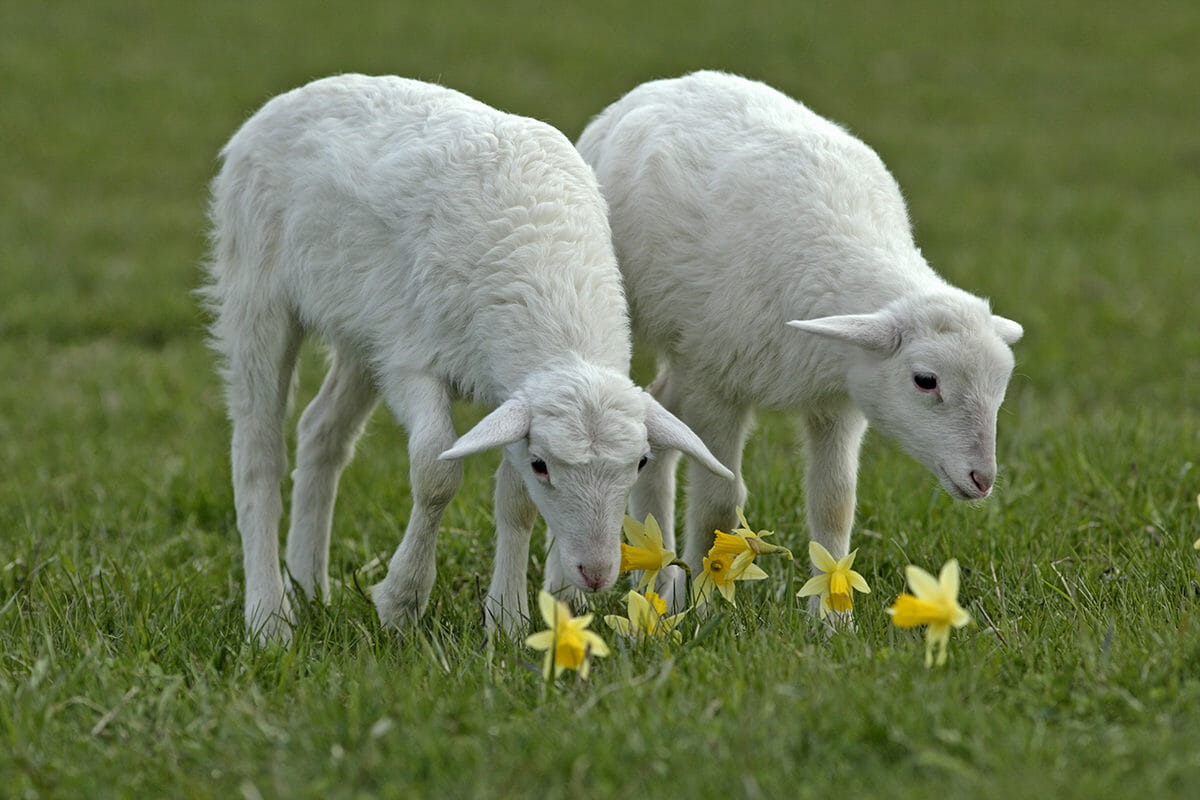
Two St. Croix Lambs. Image via Shutterstock
Unlike a goat or a horse, or any other livestock for that matter, sheep wool is much like human hair: it never stops growing (here’s what that looks like). While the main detriment for people with beards to their bellies is merely the bemused looks they might catch when walking down the street, an unshorn sheep faces life-threatening health problems. The wool eventually grows over their eyes, inhibits various bodily functions, and becomes a rat’s nest that is prone to infection.
Of course wearing 88 pounds of wool – the unfortunate situation of a sheep named Chris, who was found wandering in the Australian bush in 2015, after having been lost, and thus unshorn, for five years – also puts one at risk of heatstroke. Not to mention how hard it is just to move around.
Read More
Personal Essay: Young People Need to Find Farming. 4-H is the Answer
Many farmers raise sheep specifically for the wool, in which case the labor involved in shearing is built into their bottom line. But for those who want to raise sheep for meat, brush control, or as pets, annual shearing is a major chore, one that usually requires hiring a professional shearer.
Fortunately, there are a few sheep breeds that don’t need shearing, collectively known as “hair sheep.”
The coats of wild sheep, like that of most animals, does not grow continuously. It is shed each spring as the weather warms. Fiber from the outer coats of wild sheep, technically known as hair, is not suitable for spinning into wool, which is why ancient shepherds bred their animals to produce longer and longer undercoat fibers: the wool, which in most modern sheep breeds is prolific and ever-growing. But hair sheep, traditionally kept for meat, have coats akin to wild sheep.
On the whole, hair sheep are known as tough, adaptable breeds that thrive on open ranges with little human intervention. They tend to be more disease-resistant than wool sheep, and the meat is generally considered of superior quality, as are the hides, which may be sold for leather. Hair sheep are increasingly popular in the U.S., especially on small farms, where shearing costs often outweigh the value of the wool.
The Dorper and Katahdin hair breeds, both developed in modern times, are now among the most common sheep in America. There are also a handful of heritage hair breeds still raised in various corners of the world – including some that look more like a wild mountain goat than a domesticated sheep – some of which are available to farmers in the U.S.
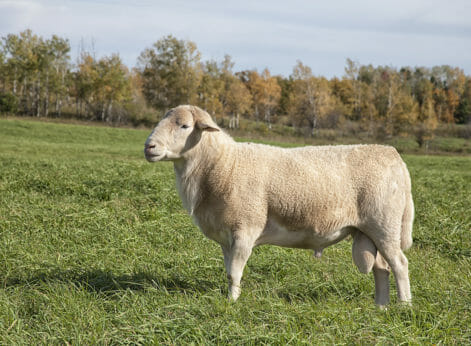
Developed in Maine in the sixties for clearing brush in powerline corridors, Katahdins were bred from traditional West African hair sheep that were crossed with various modern European breeds. They are considered extremely robust, and well-adapted to hot, humid conditions.
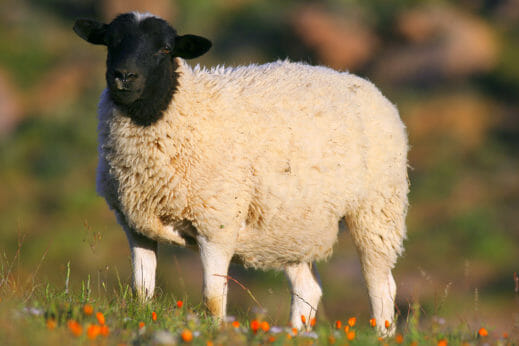
This modern South African breed thrives in arid regions and is known for its extremely large, meaty carcass. Most sheep are able to mate only in fall, but the Dorper mates year-round, making it a popular choice for industrial scale sheep production.
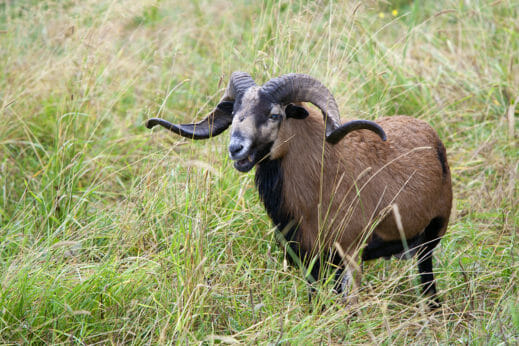
This breed is closely related to the Barbados Blackbelly, a heritage variety that is common in Latin America, but also contains genes of the mouflon, a wild mountain sheep found in the Mediterranean basin. The latter genes are responsible for the dramatic horns found on American Blackbelly rams.

This Caribbean breed originated in the 17th century and is now considered endangered by the Livestock Conservancy. Though it is adapted to heat and humidity, the St. Croix will grow a thick winter coat in cold climates, making it suitable for use throughout North America.
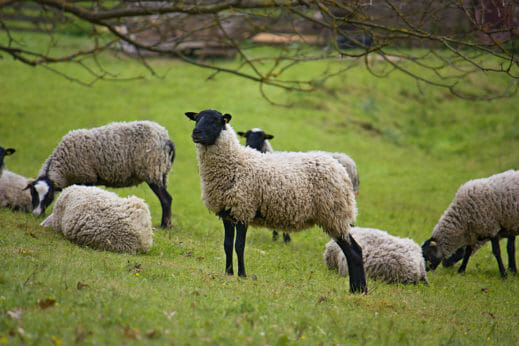
This ancient Russian sheep does grow a coat of wool, though it is naturally shed in the summer. Romanovs are astoundingly prolific breeders. They start mating at just a few months of age, and quadruplets are not uncommon. The world record litter size for sheep is held by a Romanov ewe that bore nine lambs (most sheep have one or two). They are considered a “rat-tailed” sheep, which means they have a scrawny tail that does not need to be docked for hygiene purposes, as is common practice on many breeds.
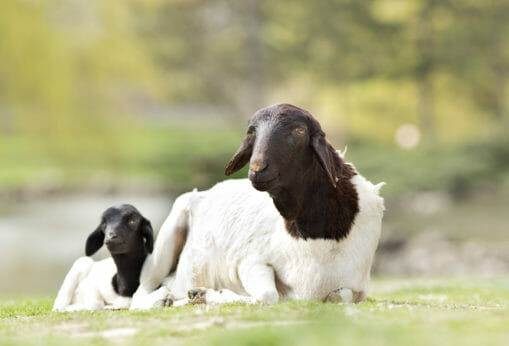
In contrast to rat-tailed sheep like the Romanov are fat-tailed, also known as fat-rumped, sheep, such as this traditional African variety. Despite the name, the Blackhead Persian originated in Somalia and is now also found in Latin America. Fat-tailed sheep were bred specifically to accumulate fat in their rear quarters, which was a source of cooking oil in ancient times.
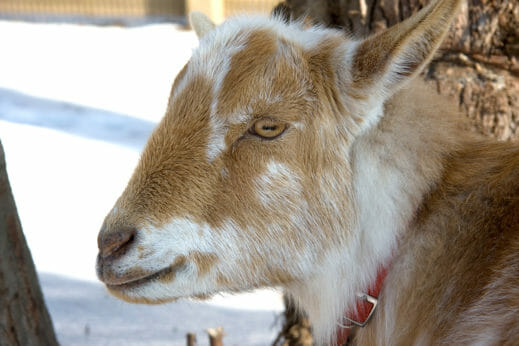
This pint-sized hair breed hails from the tropical forests of west and central Africa, though with its scruffy mane and curved horns it looks more like a mountain goat. Still commonly raised in the region, West African dwarf sheep typically produce just one lamb per years and have an extremely slow growth rate – definitely not a breed suited to industrial production.
An ancient breed favored by nomadic Maasai tribesmen in eastern Africa, this fat-tailed variety is extremely disease resistant. According to legend it was the first animal kept by the Maasai, though as the tribe abandons its nomadic ways, the breed is increasingly rare.
Learn More
How Using Endangered Animals Might Actually Save Them
SaveSave
Follow us
This work is licensed under a Creative Commons Attribution-NoDerivatives 4.0 International License.
Want to republish a Modern Farmer story?
We are happy for Modern Farmer stories to be shared, and encourage you to republish our articles for your audience. When doing so, we ask that you follow these guidelines:
Please credit us and our writers
For the author byline, please use “Author Name, Modern Farmer.” At the top of our stories, if on the web, please include this text and link: “This story was originally published by Modern Farmer.”
Please make sure to include a link back to either our home page or the article URL.
At the bottom of the story, please include the following text:
“Modern Farmer is a nonprofit initiative dedicated to raising awareness and catalyzing action at the intersection of food, agriculture, and society. Read more at <link>Modern Farmer</link>.”
Use our widget
We’d like to be able to track our stories, so we ask that if you republish our content, you do so using our widget (located on the left hand side of the article). The HTML code has a built-in tracker that tells us the data and domain where the story was published, as well as view counts.
Check the image requirements
It’s your responsibility to confirm you're licensed to republish images in our articles. Some images, such as those from commercial providers, don't allow their images to be republished without permission or payment. Copyright terms are generally listed in the image caption and attribution. You are welcome to omit our images or substitute with your own. Charts and interactive graphics follow the same rules.
Don’t change too much. Or, ask us first.
Articles must be republished in their entirety. It’s okay to change references to time (“today” to “yesterday”) or location (“Iowa City, IA” to “here”). But please keep everything else the same.
If you feel strongly that a more material edit needs to be made, get in touch with us at [email protected]. We’re happy to discuss it with the original author, but we must have prior approval for changes before publication.
Special cases
Extracts. You may run the first few lines or paragraphs of the article and then say: “Read the full article at Modern Farmer” with a link back to the original article.
Quotes. You may quote authors provided you include a link back to the article URL.
Translations. These require writer approval. To inquire about translation of a Modern Farmer article, contact us at [email protected]
Signed consent / copyright release forms. These are not required, provided you are following these guidelines.
Print. Articles can be republished in print under these same rules, with the exception that you do not need to include the links.
Tag us
When sharing the story on social media, please tag us using the following: - Twitter (@ModFarm) - Facebook (@ModernFarmerMedia) - Instagram (@modfarm)
Use our content respectfully
Modern Farmer is a nonprofit and as such we share our content for free and in good faith in order to reach new audiences. Respectfully,
No selling ads against our stories. It’s okay to put our stories on pages with ads.
Don’t republish our material wholesale, or automatically; you need to select stories to be republished individually.
You have no rights to sell, license, syndicate, or otherwise represent yourself as the authorized owner of our material to any third parties. This means that you cannot actively publish or submit our work for syndication to third party platforms or apps like Apple News or Google News. We understand that publishers cannot fully control when certain third parties automatically summarize or crawl content from publishers’ own sites.
Keep in touch
We want to hear from you if you love Modern Farmer content, have a collaboration idea, or anything else to share. As a nonprofit outlet, we work in service of our community and are always open to comments, feedback, and ideas. Contact us at [email protected].by Brian Barth, Modern Farmer
December 21, 2017
Modern Farmer Weekly
Solutions Hub
Innovations, ideas and inspiration. Actionable solutions for a resilient food system.
ExploreExplore other topics
Share With Us
We want to hear from Modern Farmer readers who have thoughtful commentary, actionable solutions, or helpful ideas to share.
SubmitNecessary cookies are absolutely essential for the website to function properly. This category only includes cookies that ensures basic functionalities and security features of the website. These cookies do not store any personal information.
Any cookies that may not be particularly necessary for the website to function and are used specifically to collect user personal data via analytics, ads, other embedded contents are termed as non-necessary cookies.
Your image for the West African dwarf sheep is a picture of a Nigerian dwarf goat…
Soay sheep have wool they shed. They are a hardy small breed originally from Scotland. I have a small flock and they’re awesome!
Don’t forget about the Painted Desert sheep
I live in the country and know people who raise some of these varieties for meat sales and they do pretty well. (One thing your pictures don’t show is that most of the flock looks like it’s suffering from a bad case of mange until all the hair falls off..)
I am just starting a little farm with sheep
Icelandic sheep, like several other primitive fluke-tailed breeds, have a natural wool break if not shorn. Most shear them, however, for their excellent wool.
Can you put 2 sheep with a goat in same pen
Any dairy hair sheep?
With the exception of 2 or 3 of these breeds the frames of these breeds can not carry sufficient meat and fat
:
I just bought ten hair sheep